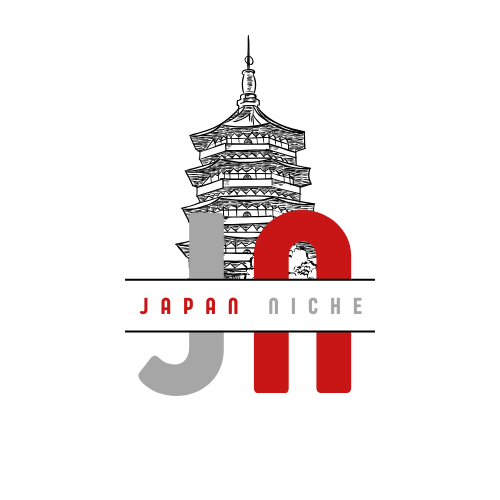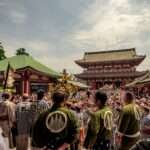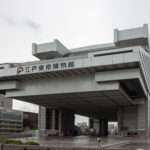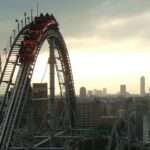Tokyo is a paradise for anime lovers. With its vibrant pop culture, buzzing streets, and neon-lit neighborhoods, it’s no wonder that so many iconic anime scenes have been set in the sprawling metropolis. What makes Tokyo even more magical for anime fans is that some of these fictional scenes are based on real-life locations, many of which you can visit. Whether you’re a long-time otaku or just beginning your anime journey, this guide will help you explore the best anime-related spots in Tokyo.
In this blog post, I’ll take you through 15 must-visit anime spots in Tokyo, immersing you in a world where fiction meets reality. From towering skyscrapers to quiet neighborhoods, these locations offer a unique opportunity to live out your favorite anime scenes in real life.
Table of Contents
- Akihabara: The Anime Mecca
- Shibuya Crossing: The Heart of Modern Tokyo
- Suga Shrine Stairs (Your Name)
- Odaiba: Digital Worlds in the Real World
- Nakano Broadway: The Otaku’s Shopping Paradise
- Ueno Park: A Peaceful Escape (Tokyo Ghoul)
- Ikebukuro: The World of Durarara!!
- Shinjuku: The Neon Jungle (Tokyo Ghoul & Weathering With You)
- Tokyo Tower: Cardcaptor Sakura and One Piece
- Mitaka: Ghibli Museum
- Yurakucho (Steins;Gate)
- Asakusa: Traditional Tokyo (Demon Slayer)
- Hachiko Statue (Wolf Children & Digimon Adventure)
- Tokyo Skytree (Your Name & Love Live!)
- Roppongi Hills: Ghost in the Shell
1. Akihabara: The Anime Mecca
If there’s one place that every anime lover must visit in Tokyo, it’s Akihabara. Known as the electric town, Akihabara is Tokyo’s anime and manga paradise. Here, you’ll find multi-story shops filled with everything from the latest anime merchandise to retro video games. It’s also home to maid cafes, where servers dressed as anime-style maids serve up coffee and cake in uniquely themed settings.
Famous anime like Steins;Gate use Akihabara as a setting, and many of its streets and shops are recognizable from various anime series. Don’t miss a visit to Radio Kaikan, which is one of the most iconic buildings in Akihabara and has appeared in numerous anime. Another stop for fans should be Super Potato, a retro gaming shop that feels like stepping into the past of Japan’s gaming culture.
- Location: Akihabara Station, JR Yamanote Line
- Best Time to Visit: Weekends, when the streets are closed to cars, and cosplayers fill the sidewalks.
2. Shibuya Crossing: The Heart of Modern Tokyo
Shibuya Crossing is one of the busiest pedestrian intersections in the world, and it’s frequently featured in anime, films, and TV shows. This iconic Tokyo spot has made appearances in anime like The Girl Who Leapt Through Time and Digimon Adventure.
At any given time, hundreds of people cross the intersection, creating a visual spectacle of controlled chaos. If you’re an anime fan, standing at this intersection gives you a real sense of being in the middle of modern Tokyo as seen in countless series.
- Location: Shibuya Station, Hachiko Exit
- Best Time to Visit: Early evening when the crossing lights up with neon signs.
3. Suga Shrine Stairs (Your Name)
One of the most famous real-life anime locations in recent memory is the Suga Shrine Stairs, featured in Your Name (Kimi no Na Wa). In the movie, these stairs are where Taki and Mitsuha, the two protagonists, finally meet. This location has become a pilgrimage site for fans of the movie, who come to recreate the iconic scene or simply experience the moment.
The stairs themselves are located in a quiet neighborhood, giving visitors a sense of peace amidst the bustling city.
- Location: Near Yotsuya Station
- Best Time to Visit: Early morning for fewer crowds.
4. Odaiba: Digital Worlds in the Real World
Odaiba is a futuristic man-made island in Tokyo Bay, and it has been the setting for many anime, including Digimon Adventure and Psycho-Pass. Odaiba’s modern skyline, including landmarks like the Fuji TV Building and the Rainbow Bridge, has provided a backdrop for these and other series.
Additionally, Odaiba is home to the life-sized Gundam Statue at DiverCity Tokyo Plaza, a must-see for fans of the Gundam franchise. The towering statue is an awe-inspiring sight and symbolizes Japan’s deep connection to anime culture.
- Location: Odaiba, via Yurikamome Line
- Best Time to Visit: Evening, when the Gundam statue lights up.
5. Nakano Broadway: The Otaku’s Shopping Paradise
While Akihabara is the most famous destination for anime goods, Nakano Broadway is another must-visit location for those looking to dive deep into anime culture. This multi-level shopping complex in Nakano offers everything from anime figures to rare vintage manga.
It’s the perfect place to find hidden gems or merchandise from lesser-known series. Anime fans love Nakano Broadway for its variety, and it’s often less crowded than Akihabara, making for a more relaxed shopping experience.
- Location: Nakano Station, JR Chuo Line
- Best Time to Visit: Weekdays to avoid crowds.
6. Ueno Park: A Peaceful Escape (Tokyo Ghoul)
For fans of the dark, supernatural anime Tokyo Ghoul, a visit to Ueno Park is a must. In the anime, the park appears during scenes of conflict and reflection, offering a quiet contrast to the action-packed series.
In real life, Ueno Park is a serene space filled with trees, temples, and museums, and it’s one of the best spots in Tokyo for cherry blossom viewing during the spring. It’s a perfect place for anime fans to relax and enjoy the beauty of nature while recalling scenes from Tokyo Ghoul.
- Location: Ueno Station, JR Yamanote Line
- Best Time to Visit: Spring (for cherry blossoms) or autumn (for fall foliage).
7. Ikebukuro: The World of Durarara!!
Ikebukuro is the setting for the popular anime Durarara!!, a series known for its eccentric characters and supernatural elements. The real-life district of Ikebukuro retains much of the energy and atmosphere seen in the anime, with its towering department stores, arcades, and bustling streets.
Anime fans visiting Ikebukuro can experience the location’s vibrant culture firsthand, including the famous Sunshine City shopping complex, which appears in the anime. Don’t forget to visit the Animate store, the largest anime goods store in Japan, which is located in this district.
- Location: Ikebukuro Station, JR Yamanote Line
- Best Time to Visit: Afternoons to experience the district’s full energy.
8. Shinjuku: The Neon Jungle (Tokyo Ghoul & Weathering With You)
Shinjuku is one of Tokyo’s busiest and most famous neighborhoods, often featured in anime due to its iconic skyscrapers and neon-lit streets. It appears in anime such as Tokyo Ghoul, where protagonist Kaneki Ken faces major turning points in the area. It’s also depicted in Weathering With You, Makoto Shinkai’s other blockbuster film after Your Name.
In Shinjuku, you can explore locations like Kabukicho, the entertainment district that has a dangerous yet alluring atmosphere, and Shinjuku Gyoen, a large and peaceful park that contrasts the urban jungle.
- Location: Shinjuku Station, JR Yamanote Line
- Best Time to Visit: Nighttime for the neon lights.
9. Tokyo Tower: Cardcaptor Sakura and One Piece
No Tokyo skyline is complete without the iconic Tokyo Tower, a frequent backdrop in many anime series. The bright red structure has made appearances in anime such as Cardcaptor Sakura, where it’s the site of several key magical battles, and One Piece, where it symbolizes the crew’s dreams of reaching new heights.
While the Tokyo Tower is no longer the tallest structure in Japan, it remains a beloved symbol of the city and a must-visit spot for anime fans.
- Location: Akabanebashi Station, Toei Oedo Line
- Best Time to Visit: Sunset for the best views of the city.
10. Mitaka: Ghibli Museum
No anime fan’s trip to Tokyo would be complete without a visit to the Ghibli Museum in Mitaka. Studio Ghibli is one of the most renowned animation studios in the world, known for its films such as My Neighbor Totoro, Spirited Away, and Princess Mononoke. The museum, designed by director Hayao Miyazaki, is a whimsical journey into the world of Ghibli, complete with life-sized characters, exclusive short films, and stunning exhibitions.
Since tickets often sell out quickly, it’s recommended to book in advance to ensure you can experience this magical place.
- Location: Mitaka Station, JR Chuo Line
- Best Time to Visit: Weekdays to avoid crowds.
11. Yurakucho (Steins;Gate)
The anime Steins;Gate, known for its complex story about time travel, features several real-life Tokyo locations, including the Yurakucho district. In the anime, characters visit the area’s electronics stores and cafes, which also serve as key points in the plot.
Yurakucho offers a blend of modern and traditional Tokyo, with its nearby shopping centers and under-the-train-track izakayas (Japanese pubs). For Steins;Gate fans, it’s a great spot to reflect on the series’ intricate storyline while enjoying the local atmosphere.
- Location: Yurakucho Station, JR Yamanote Line
- Best Time to Visit: Evening to experience the local nightlife.
12. Asakusa: Traditional Tokyo (Demon Slayer)
Asakusa offers a glimpse into traditional Tokyo, with its historical temples, narrow streets, and old-fashioned shops. This district has been featured in the immensely popular anime Demon Slayer, where the characters visit Asakusa during their quest to defeat demons.
Fans of the anime will recognize Asakusa’s Kaminarimon Gate and Senso-ji Temple, both of which appear in the series. Asakusa is also a great place to pick up traditional Japanese souvenirs and street food.
- Location: Asakusa Station, Ginza Line
- Best Time to Visit: Morning for a quieter, more serene experience.
13. Hachiko Statue (Wolf Children & Digimon Adventure)
The Hachiko Statue, located near Shibuya Crossing, is a well-known meeting point in Tokyo, but it’s also been featured in several anime, including Wolf Children and Digimon Adventure. The statue commemorates the story of Hachiko, the loyal dog who waited for his owner every day at Shibuya Station, even after his owner’s death.
For anime fans, the Hachiko Statue represents not only the famous real-life story but also a nod to its appearances in pop culture.
- Location: Shibuya Station, Hachiko Exit
- Best Time to Visit: Afternoon, after exploring Shibuya Crossing.
14. Tokyo Skytree (Your Name & Love Live!)
The Tokyo Skytree is one of the newest and tallest landmarks in the city, and it has been featured in anime like Your Name and Love Live!. The tower offers stunning views of the Tokyo skyline, making it a popular spot for anime fans and tourists alike.
In Your Name, the Skytree is visible in several panoramic scenes, highlighting the beauty of the city. For Love Live! fans, visiting the Skytree allows you to relive moments from the anime’s concert scenes.
- Location: Oshiage Station, Tokyo Skytree Line
- Best Time to Visit: Dusk to catch the sunset and city lights.
15. Roppongi Hills: Ghost in the Shell
For fans of Ghost in the Shell, Roppongi Hills offers a futuristic glimpse into Tokyo’s potential future. The anime, set in a cyberpunk world, often features urban environments similar to the skyscrapers and modern architecture of Roppongi.
Roppongi Hills is also home to the Mori Art Museum and offers incredible views of Tokyo from its observation deck. It’s the perfect location to reflect on the themes of technology, identity, and society explored in Ghost in the Shell.
- Location: Roppongi Station, Tokyo Metro Hibiya Line
- Best Time to Visit: Evening for the best city views.
Tokyo is a city where the lines between anime and reality blur. From iconic landmarks like Shibuya Crossing to quieter spots like the Suga Shrine Stairs, these real-life anime locations offer fans the chance to step into the worlds of their favorite series. Whether you’re hunting for anime merchandise in Akihabara or retracing the steps of your favorite characters in Shinjuku, Tokyo has something for every anime fan.
Each spot tells a different story and brings a unique anime experience to life, making Tokyo not just a travel destination, but a pilgrimage for anime lovers worldwide.





